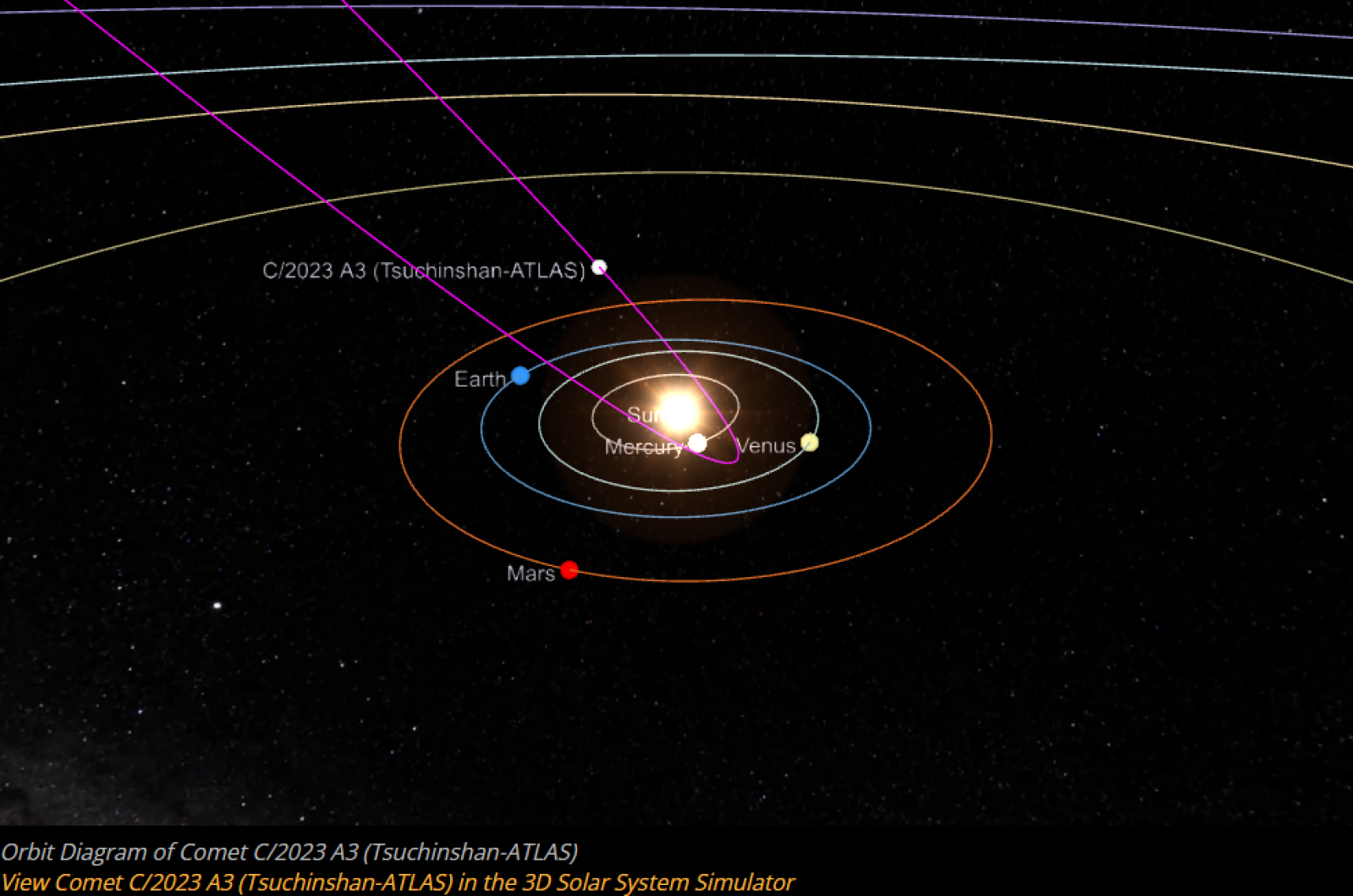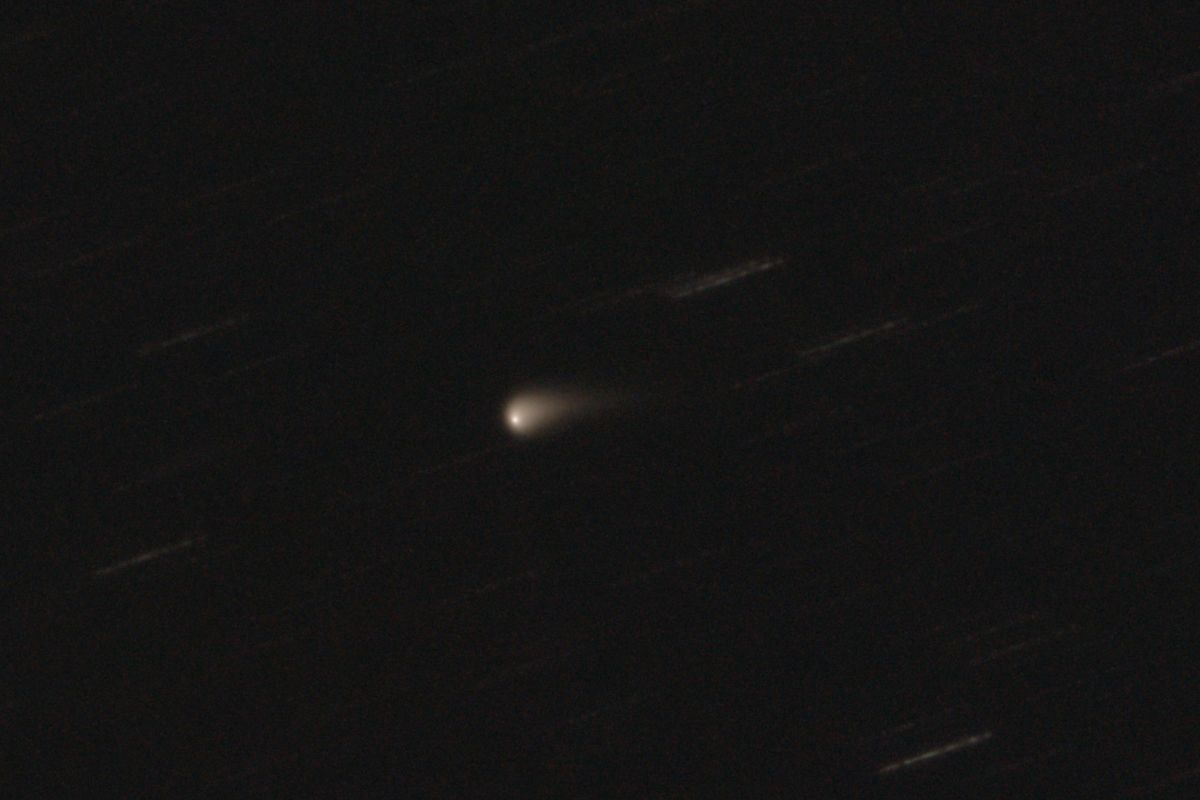Follow us on Google News (click on ☆)

Illustration of the solar system showing the current position of the comet C/2023 A3 Tsuchinshan-ATLAS.
Credit: TheSkyLive.com
This comet, initially mistaken for an asteroid, was identified thanks to images taken by the Purple Mountain Observatory in China. At the time of its discovery, it was beyond Jupiter's orbit, but it will approach the Sun at a distance of only 36 million miles (58 million kilometers) in September, then pass 44 million miles (71 million kilometers) from Earth in October.
If conditions align, this comet could shine up to magnitude 1 or 2, becoming visible to the naked eye and displaying a spectacular tail.
This summer, only observers in the southern hemisphere will be able to track the comet. Their observations will provide information on its progression. One variable that might impact its brightness is the "forward scattering" of sunlight by the comet's dust, increasing its brilliance around October 8.
This phenomenon occurs when sunlight, passing through dust particles ejected by the comet, is scattered forward towards Earth. This process is called "forward scattering." Due to this scattering, sunlight is amplified, making the comet exceptionally bright when it is correctly positioned between the Sun and Earth. This surge in brightness can make the comet visible to the naked eye and even very spectacular.

C/2023 A3 (Tsuchinshan-ATLAS) observed with a 20 cm telescope on April 26, 2024.
Credit: Wikimedia Commons/C messier/CC BY 4.0
If the comet follows the path of Skjellerup-Maristany (1927) and McNaught (2007), it could become as bright as Venus, visible even in daylight. It should be well-positioned for observations in the northern hemisphere's sky by mid-October.
However, there are no guarantees. Promising comets sometimes disappoint, such as Kohoutek in 1973-74. Conversely, unexpected comets can surprise, like NEOWISE in 2020. Let's hope that Tsuchinshan-ATLAS puts on a worthy show.
What is a comet?
A comet is a small celestial body in the solar system, primarily composed of ice, dust, and gas. When a comet approaches the Sun, the solar heat causes its ices to sublimate, forming a bright atmosphere called a coma, and often one or more tails extending for millions of miles.
These tails are created by the interaction of the solar wind with the comet's nucleus, releasing gas and dust. Comets generally originate from two main regions: the Kuiper Belt and the Oort Cloud, located at the edges of the solar system. They are often considered to be primitive relics, preserving unchanged materials since the formation of the solar system about 4.6 billion years ago.